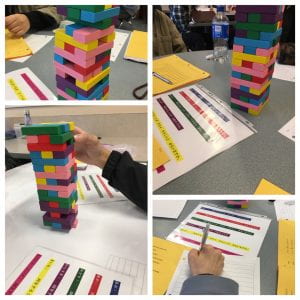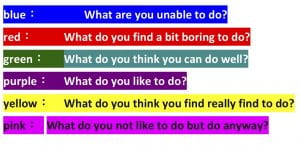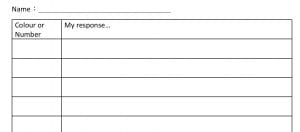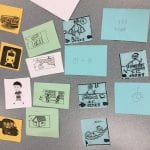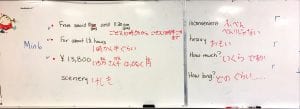 We do a lot to help our students to raise their proficiency in presentational writing. And based on what we do many kids do. They add detail, expand with reasons, try to explain and move beyond just writing statements. But for some, writing – and growing their writing – is not easy and I’ve struggled to help them to improve.
We do a lot to help our students to raise their proficiency in presentational writing. And based on what we do many kids do. They add detail, expand with reasons, try to explain and move beyond just writing statements. But for some, writing – and growing their writing – is not easy and I’ve struggled to help them to improve.
I am fortunate to work with a wide range of students and I currently have a 2nd year student who has difficulty organizing her thoughts and getting down to work. In the first unit the assignment was to re-tell a story in the past tense and based upon what I saw after the first day of work I realized that I was failing her. Our great support teachers in our school worked with me to see that my student needed a way to organize – to start small and then gradually expand what she is writing. So I created a format using an fill in the blank/add a sentence strategy. For the summary it went like this – Step 1 fill in a past tense form: “A long long time ago there _____an old man (was).” Step 2 – add a related sentence: “Now add one piece of information about the old man (in a sentence).” For each part of the story she filled in the ‘past tense’ verb then added an extra detail sentence. When she completed it she had a basic summary and participated in peer feedback using it. A copy of the assignment: kobutori retell scaffolded write
In our second unit the task was to create an Instagram post of her dream room – and to write a long description of it. I needed a different way to help her as I didn’t know what she would design to be described. I came up with a ‘target structure/add a reason/add a detail’ sheet. In each she identified an item in the room (a total of 6) and wrote down – on separate lines – the item “desk” its location “beside the bed” then put it together “The desk is beside the bed” and added what she did with it “Because I have homework” and finally she put all the pieces together “Because I have homework, there is a desk beside the bed.” After creating her 6 main sentences her task was to go back and add 1 more piece of information to each sentence – for example “in the first sentence add a describing word for how the item looks” and “in the 3rd sentence add how often you use it”. Now she has a description that meets expectations for using unit items. A copy of the assignment: room project scaffolded
It’s not just my students with IEP’s that can find this useful. In fact I’ve realized that this approach can assist any student who may need support in addressing a writing task. Yes – I finally realized this! In my grade 11 class I have students who are currently working on a write-up of an interview with a classmate. So I created a slightly less formulaic sheet – but one that helps them to express themselves in a more grade appropriate way by guiding them to create a basic grade-appropriate response then add some ‘extra’s’ around it including an opinion etc. A copy of the assignment: scaffold written interview paragraph
My 2nd year student loves this approach. “It works for my brain”, she says and beams when I tell her that working with her is helping me to help others to write. I’ll be preparing a scaffolding sheet for each of my tasks…and my students’ written expression will be the better for it.
C
PS – if you want more detail of what’s in the documents – and you don’t read Japanese – let me know and I’ll be happy to ‘translate’ for you!



